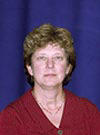Dr. Sandra Ball-Rokeach, a professor of communication at the Annenberg School for Communication at the University of Southern California and two of her graduate students, Matthew Matsaganis and Vikki Katz, have designed an interactive course for USC students who want to learn more about the history and current boom of ethnic media in the U.S. Read on to find out about the fuel that’s driving the course, what Viki Katz has to say about the LA Times and why including ethnic media and understanding its purpose is crucial to everyone—not just journalists.
KD: What exactly is the course about?
SBR: Ethnic and immigrant media in America is the title of the course. The basic overall gist is an attempt to take students, theoretically and historically and in a hands-on way what Ethnic Media is and how it works. The students get an opportunity to interview and spend time in different ethnic media offices. We would also have people from various ethnic media outlets to come in and speak to the class
VK: We define and talk about various concepts used broadly in media and literature. What is ethnic media; what is alternative media? What is race and ethnicity and how do these concepts relate to the media today? The second deals with how to get to the ethnic media audience and breaking the study down into immigrant communities such as Italian, Greek, Jewish, Korean and Chinese media and ethnic media such as African American and Native American media.
The reason we differentiate ethnic media and immigrant media is because one of the interesting shifts is how these media go from being something that serves a new immigrant population to serving what has become an ethnic minority, and how the coverage varies in relation to the changing needs of that particular community.
MM: We also look at some much smaller groups like Israeli, Middle Eastern and Armenian groups on a general level and specifically by ethnic groups. When we go into more specific groups we’ll have people come in and talk to students about their own experiences of reporting on these communities
KD: Do you mean ethnic groups within these larger ethnic groups?
VK: Yes
VK: We want to show journalism students other opportunities for jobs in the future. For example, there’s a pretty good chance that new grads could get positions in the Latino media, which is rapidly expanding right now. We’re trying to encourage them to look at all aspects of journalism including the hard facts about producing in the current economy. Essentially, we want them to know there’s more to life than an internship at the LA Times.
SBR: There’s also an institutional mission to the course; we’re trying to give greater attention to the ethnic media among those students who are studying to be journalists, but we also want the ethnic media to figure into how the larger social sciences go about studying race and ethnicity issues because the ethnic media is not evident in the vast majority of discussions.
KD: What indications inspired the need for this course?
SBR: We’ve had this large project—the Metamorphosis Project (link) going on for a long time. It’s very hard to understand the transformations that are going on with increased population diversity and attempt to build a new civil society based on diversity without bringing into discussion the ethnic media that are primary sources of information and communication for so many of the ethnic and immigrant populations. The course is a way to infuse this into the curriculum. We can write research and policy papers, but let’s start getting it in the curriculum—and not just in journalism, but in the larger discourse of social issues.
KD: Are you working on any special projects or collaborations?
SBR: We’ve had ongoing discussions with NCM (now New American Media). With their presence now in the Annenberg School, it seems like an opportune time for building collaboration, so we’re working on ways to do that.
KD: The course has been offered for two semesters, but each time, you fall shy of the required amount to actually teach the course. What’s the plan to get students interested enough to enroll in the spring?
SBR: It’s hard. We’re going to have to do it more interpersonally; I think we overestimated the power of flyers. We need to talk to some of the advisors in journalism, sociology and American Studies because it’s a natural place where students might select this as an elective course. We’re trying to offer this to a broader audience so we’re still trying to get over some requirements hurdles. Also, Vikki and Matthew, who did the bulk of the work on the syllabus, being graduate students, put too much work into the class, so we might want to back off in terms of some of the course description; it might seem a little intense.
Sandra Ball-Rokeach is also the director of the Metamorphosis Project.
KD: What exactly is the course about?
SBR: Ethnic and immigrant media in America is the title of the course. The basic overall gist is an attempt to take students, theoretically and historically and in a hands-on way what Ethnic Media is and how it works. The students get an opportunity to interview and spend time in different ethnic media offices. We would also have people from various ethnic media outlets to come in and speak to the class
VK: We define and talk about various concepts used broadly in media and literature. What is ethnic media; what is alternative media? What is race and ethnicity and how do these concepts relate to the media today? The second deals with how to get to the ethnic media audience and breaking the study down into immigrant communities such as Italian, Greek, Jewish, Korean and Chinese media and ethnic media such as African American and Native American media.
The reason we differentiate ethnic media and immigrant media is because one of the interesting shifts is how these media go from being something that serves a new immigrant population to serving what has become an ethnic minority, and how the coverage varies in relation to the changing needs of that particular community.
MM: We also look at some much smaller groups like Israeli, Middle Eastern and Armenian groups on a general level and specifically by ethnic groups. When we go into more specific groups we’ll have people come in and talk to students about their own experiences of reporting on these communities
KD: Do you mean ethnic groups within these larger ethnic groups?
VK: Yes
VK: We want to show journalism students other opportunities for jobs in the future. For example, there’s a pretty good chance that new grads could get positions in the Latino media, which is rapidly expanding right now. We’re trying to encourage them to look at all aspects of journalism including the hard facts about producing in the current economy. Essentially, we want them to know there’s more to life than an internship at the LA Times.
SBR: There’s also an institutional mission to the course; we’re trying to give greater attention to the ethnic media among those students who are studying to be journalists, but we also want the ethnic media to figure into how the larger social sciences go about studying race and ethnicity issues because the ethnic media is not evident in the vast majority of discussions.
KD: What indications inspired the need for this course?
SBR: We’ve had this large project—the Metamorphosis Project (link) going on for a long time. It’s very hard to understand the transformations that are going on with increased population diversity and attempt to build a new civil society based on diversity without bringing into discussion the ethnic media that are primary sources of information and communication for so many of the ethnic and immigrant populations. The course is a way to infuse this into the curriculum. We can write research and policy papers, but let’s start getting it in the curriculum—and not just in journalism, but in the larger discourse of social issues.
KD: Are you working on any special projects or collaborations?
SBR: We’ve had ongoing discussions with NCM (now New American Media). With their presence now in the Annenberg School, it seems like an opportune time for building collaboration, so we’re working on ways to do that.
KD: The course has been offered for two semesters, but each time, you fall shy of the required amount to actually teach the course. What’s the plan to get students interested enough to enroll in the spring?
SBR: It’s hard. We’re going to have to do it more interpersonally; I think we overestimated the power of flyers. We need to talk to some of the advisors in journalism, sociology and American Studies because it’s a natural place where students might select this as an elective course. We’re trying to offer this to a broader audience so we’re still trying to get over some requirements hurdles. Also, Vikki and Matthew, who did the bulk of the work on the syllabus, being graduate students, put too much work into the class, so we might want to back off in terms of some of the course description; it might seem a little intense.
Sandra Ball-Rokeach is also the director of the Metamorphosis Project.


